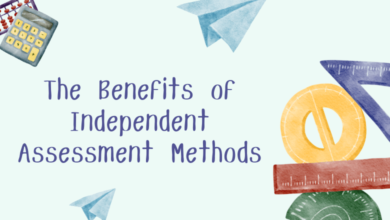Is PTE Exam Valid for an Australia PR Statement?

The PTE exam is going to be obtained in English language by the Australian Department of Home Affairs, if candidates have registered for Australian PR and other visa categories.
So the question arises, “Is PTE authentic for Australia PR?” Yes! The PTE exam is logical for Australia PR. But, the validity is varied so let’s check the PTE score validity for AustralianPR.
Accuracy of Score for Australian PR
The validity of PTE score stays up to 2 years but the department of migration in Australia allows up-to 3 years old PTE scores. This is the main difference between both. PTE score for Australia PR should be a minimal of 65 otherwise it is very tough to get a visa with a very low score. However, with perfect PTE tips and tricks, you can get your desired score.
Are You Ready for Your Extensive PTE Exam Preparation with Our Useful Tips?
The PTE test is like other standardized tests for the English language. It has different sections to analyse your reading, listening, speaking, and writing skills. These all can be better understood in depth from the PTE syllabus.
Each section has its relevance in language fluency. For PTE Exam all the sections need to be separately put together. So let’s check out different PTE tips and tricks for you to practice each category:
Best PTE Tips and Tricks to Achieve Good Scores in PTE Exam
Choose Single Answer
- First focus on keywords and recognize the prime message
- There is no negative marking, so don’t leave it. Answer it.
- Narrow down the option by using the elimination.
- Read the question again and again.
- Almost 60% of answers you can find in the first two lines.
- Know how to paraphrase that transfer the same meaning through different words.
Choose Multiple Answers
- This question will have negative marking. If you are not sure, don’t select any option and leave it.
Re-order paragraphs
- Look for headlines as it includes major ideas from the paragraph.
- Sentences start with pronouns as he, she, her, etc will never be the first sentence.
- Look for contradictory phrases with, however, but, also, moreover, and find the sentence before it.
Fill in the blanks
- Answer all questions as there is no negative marking.
- Before and after the fill in the blank focus on parts of speech. It will find the missing word.
- Most of the time the word will likely have a synonym in the text.
Read Aloud
- Raising your voice at the beginning and keeping it low at the end will make the sentence sound more authentic.
- If you realize any mistake don’t stop, speak continuously.
- Practice with tongue twisters every day.
Repeat Sentence
- Listen and memorize the sentence.
- As soon as the clip ends, start speaking.
- If you forgot the sentence, focus on keywords and repeat those in your sentences.
Describe Image
- Start with illustrations, depicted like words.
- Notice the chart. Line graphs have a timeline, bar charts compare and pie charts have slices.
- Make use of words like: on the left side, on the right side, above, below, etc.
- Try to finish it in 30-35 seconds and don’t leave incomplete record sentences.
Repeat Lecture
- Observe the keywords, and understand the factors of the topic.
- Instead of repeating full names, use — Dr. or the professor said, etc.
- Try to capture 3-5 best sentences. They should be enough to repeat the lecture.
Answer short questions
- Before some words Add articles like ‘A’, ‘An’, ‘The’.
- Just reiterate the words in the question if you don’t know the correct answer.
Listening Tips
- Listen actively and learn English songs. Focus on lyrics.
- Watch movies with and without subtitles.
- Listening to new content will increase vocabulary and improve your understanding.
Summarize spoken text
- Limit your answer
- You can start like this “The speaker mentions”
- Use the notepad to note down the keywords.
- Focus on the most used keywords.
Write an Essay
- Keep your essay long between 200–300 words.
- Be thoughtful of the spellings, plurals, and grammars.
- Structure your essay with this pattern — introduction, body, conclusion.
- Plan the structure of your essay. It should be based on problem-solution, advantages-disadvantages, an opinion essay, etc.
Conclusion
This PTE exam preparation does not need you to professionally master the subject. It is required to ensure that you understand the official language. Your result and score in this test will assure that you can study abroad with this language as the medium of studying from English-speaking professors among all international backgrounds. It ensures that you want to research at your end to utilize the exam score for studying abroad. However, consult industry experts for better guidance, so they can help you from scratch.






